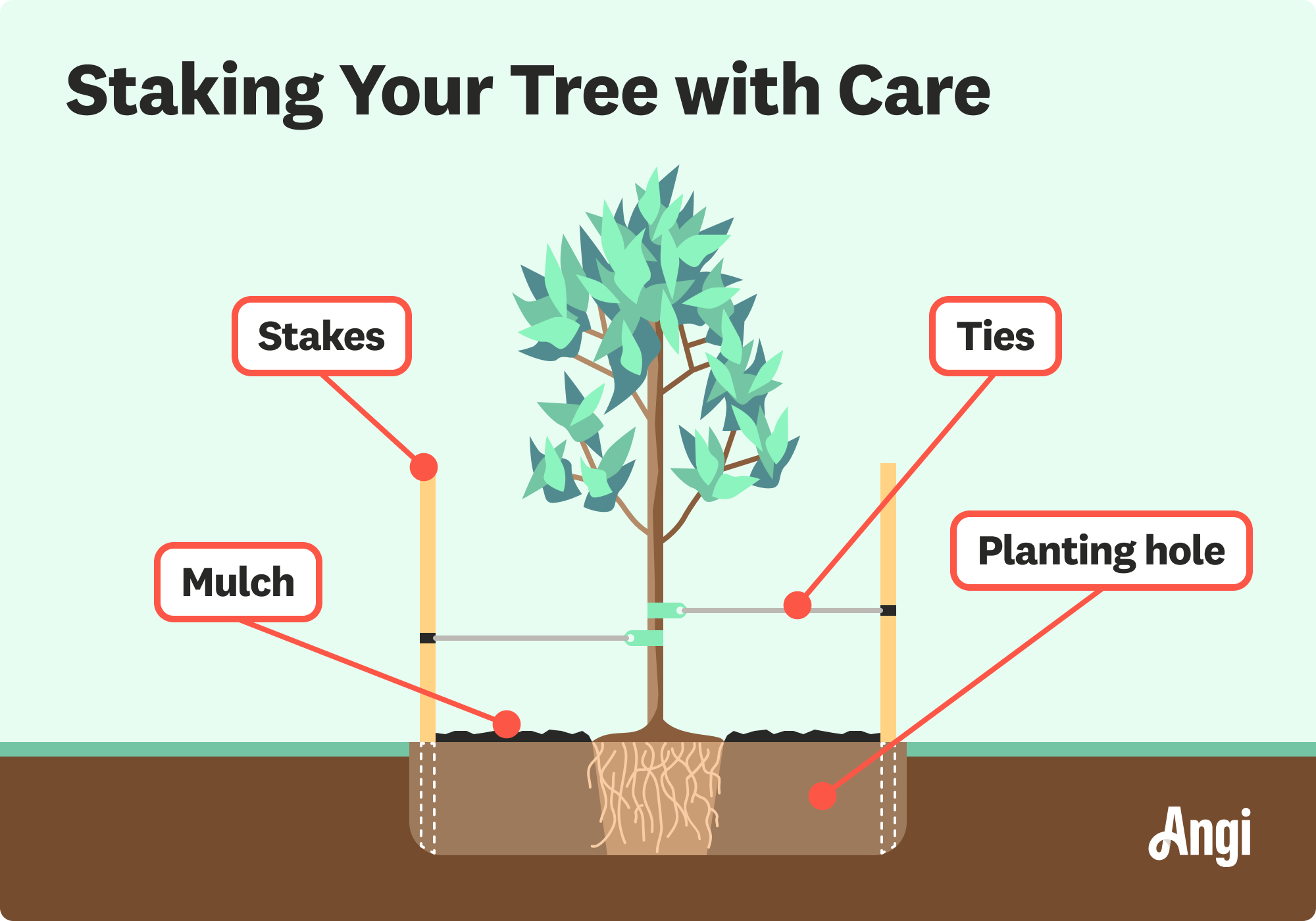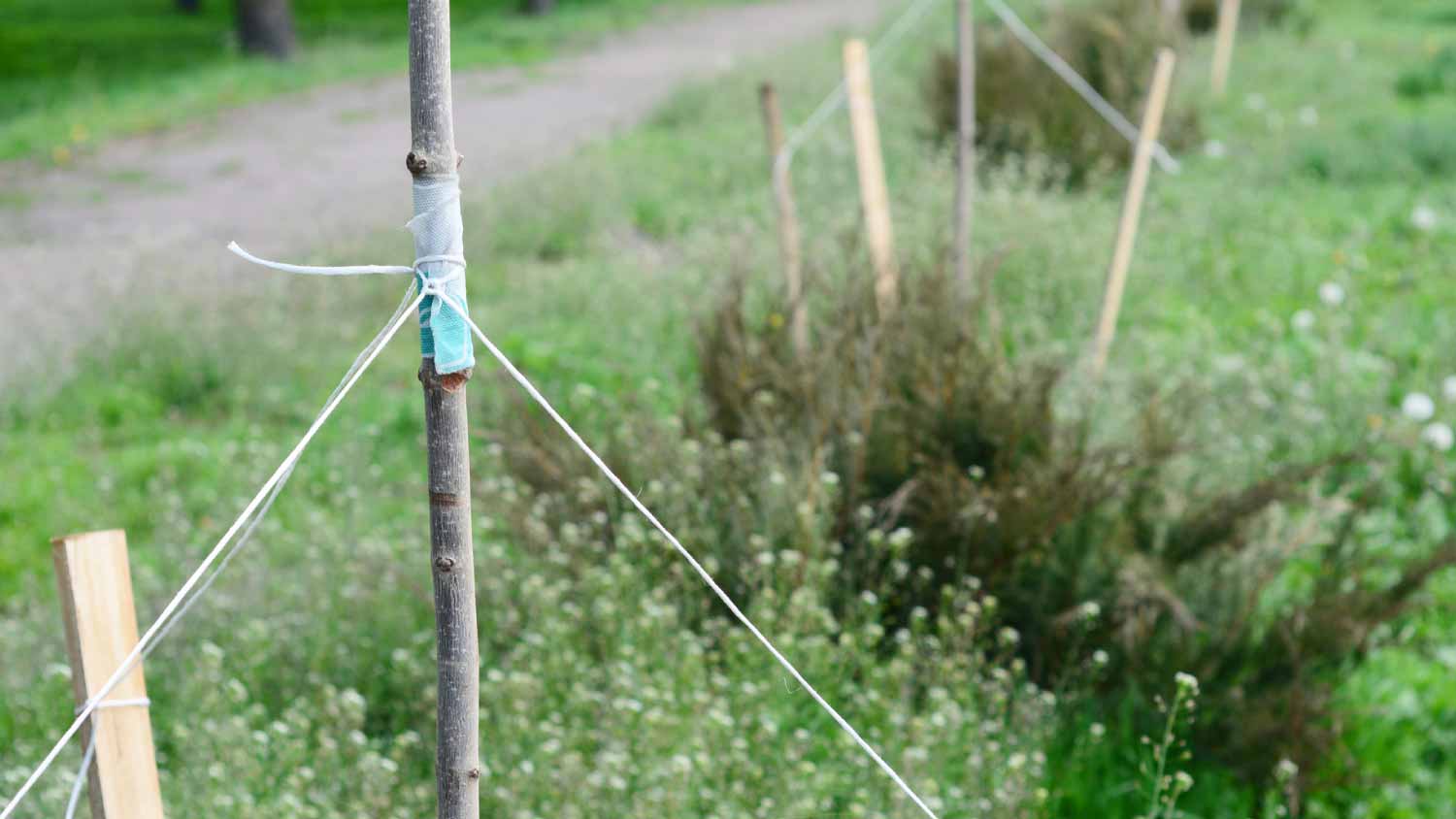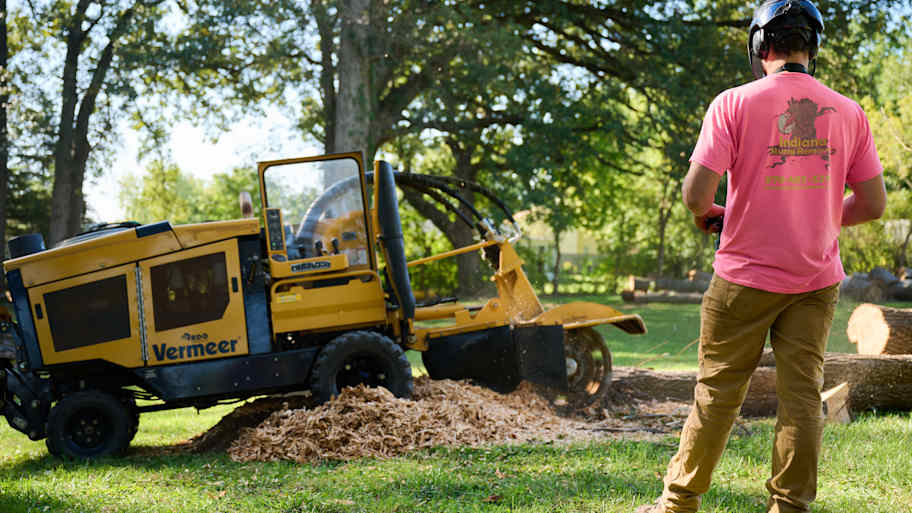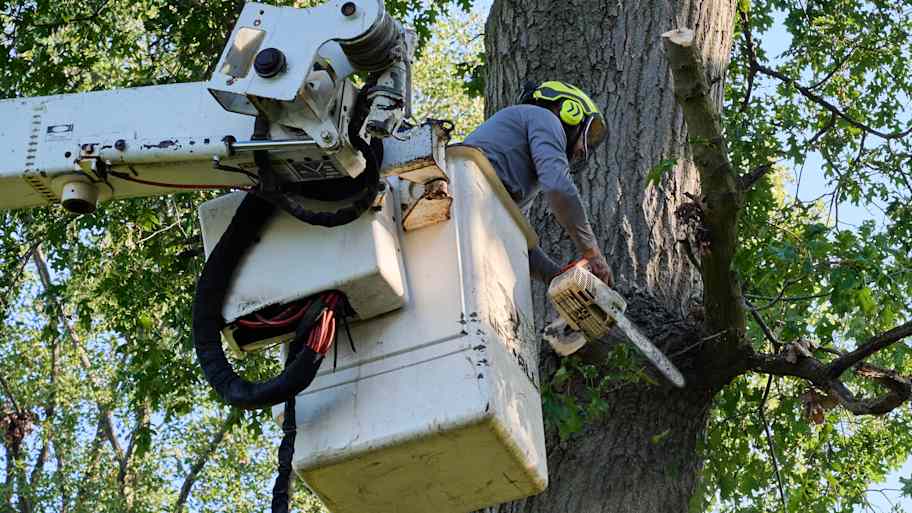How To Stake Trees for Healthy Growth
Help a young tree grow with these foolproof steps


Whether you’re planting new trees or inherited a few that need extra support, learning how to stake trees is the key to healthy growth. Staking trees can help your new plants stand tall and have time to develop a healthy root system. Let’s review why and when you should stake trees, and also how to care for them after the stake is in place.

Why Do I Have to Stake Trees?
Not every new or growing tree requires staking, but this process can assist trees that need extra support. In certain circumstances, staking young saplings can help them grow upright, grow a healthy root system, and keep them from falling over during windy or rough weather conditions. However, it’s important to stake the trees correctly as problems can occur if a tree is tied too tight or if the staking material unintentionally damages the trees.
When to Stake Trees
Since staking trees incorrectly can lead to serious damage, it’s essential to know how to identify when trees can benefit from staking. Consider staking your trees in the following circumstances:
Tree is regularly exposed to high winds
Tree is located near heavy traffic
Tree is leaning or not standing upright
Tree’s root ball moves in the soil when the trunk moves
These conditions may benefit from staking as it can provide additional stability, ensure the tree’s roots will be established, and the tree won’t knock over or lean in a dangerous way. You may consider hiring an arborist to inspect your trees to see if they would recommend staking or not.
How to Stake Trees

Now for the fun part—the staking! For this project you’ll need the below tools and materials:
Tools
Measuring tape
Sledgehammer
Wire cutters
Materials
5- to 6-inch wooden stake
25 inches of metal wire
2 hose segments, about 6 to 8 inches long
Measure and Secure Stake
Measure just outside of the root ball of your tree to determine stake placement. Put your stake parallel to the tree, then drive it one to two inches into the soil with a sledgehammer. Depending on the size of the tree, you may need a few more stakes to secure it properly.
Wrap with Wire
Take metal wire and wrap it around the top half of your stake about three to four times, then walk the other end of the wire toward the tree. Put your hose segment around the trunk of the tree and feed the wire through it, and then secure the opposite end to the stake. Cut off any excess wire.
Monitor the Stake and Tree
Keep an eye on your tree and its stake, checking to see if any shifting occurs or if any wear has compromised the bark. You may need to readjust the wire or drive the stake a few inches deeper into the ground if it’s shifted or moved in the ground.
Taking Care of Your Staked Trees
Since it’s best to keep stakes in place for about one year, your job isn’t done once the wire is secure. Instead, you’ll need to regularly check on and maintain the support from the stake for best results.
Follow these tips to care for your growing tree:
Water the tree regularly, keeping soil moist but not saturated
Apply a layer of mulch around the base to keep weeds at bay
Keep an eye out for signs of pest infestation or disease
Prune any dead branches for optimal growth
Remove stakes when tree looks strong enough to stand on its own
DIY vs. Hiring a Pro
Whether you’re a beginning DIYer or a seasoned pro, staking a tree is a fairly easy project to tackle solo. Once you have the materials required for staking, you just need a free hour or so to put the stakes in place to help support your growing tree.
However, if you’d rather leave this task up to a professional, consider contacting your local tree maintenance professional to provide an estimate or treatment plan. Since this is a pretty simple job, you’ll likely pay the most for the labor versus specific materials or tools, which a pro should have handy.
Frequently Asked Questions
There are a few differences between tree guying and tree staking. Tree guying requires anchor stakes that are shorter and stronger than regular stakes and are driven deeper into the ground at an angle away from the tree. Tree staking uses longer stakes that are set parallel to the tree and are used for smaller trees. Consult a local tree professional to determine which method is best for your tree.
If you don’t stake a tree that needs support, it could be at greater risk of being damaged or failing completely, whether it uproots or falls over. That could cause damage to your property or other surrounding trees. If you want to grow healthy trees, you may need to stake them for best results.





- How to Straighten a Tree That’s Leaning in Your Yard
- Here’s Where To Plant Trees In Your Backyard
- How to Transplant a Tree: 9 Steps to Success
- When To Cut Down A Tree: 13 Ways To Tell
- How to Protect Trees From Frost and Prevent Damage
- How to Help Your Trees Survive a Drought
- Transplanting Large Trees? Here's How to Do It Safely
- 7 Reasons Why You Shouldn't Plant a Tree in Your Yard
- Can You Cut Down a Tree on Your Property?
- How to Remove a Tree Yourself










